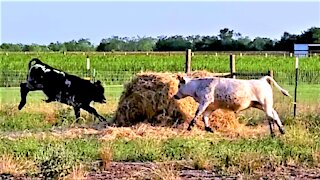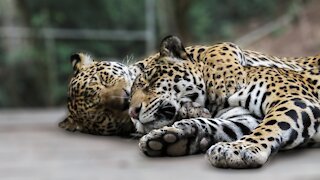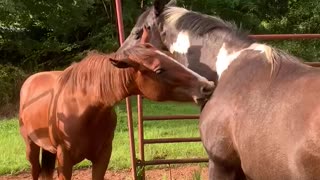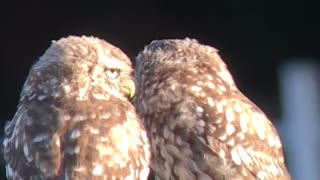Premium Only Content

Rescued manatees adorably kiss each other
These adorably funny manatees were found beached when they were just little babies, and had to be rescued and cared for at a marine mammal rehabilitation center, and should soon be released back into the ocean.
The sense of touch is a manatee's strongest sense. Their faces, covered in hairs, is as sensitive as a human's fingertips, so it is how they investigate things. Their body hairs help them detect slight vibrations in the water. These hairs are called "tactile hairs", and have the function to detect mechanosensory stimuli, instead of providing warmth or protection, such as "pelage hair". The main class of tactile hair is called vibrissae, and it's usually confined to the face area in other animals, but are all over manatee's bodies. Manatees and dugongs are the only animals that have exclusively tactile hairs, and no other type of hair on their bodies.
The West Indian Manatee (Trichechus manatus) is the largest species of Sirenians alive. The Sirenia order also includes the Amazonian Manatee (Trichechus inunguis) and the African Manatee (Trichechus senegalensis).
The West Indian Manatee is currently divided into two subspecies, the Florida Manatee (Trichechus manatus latirostris) and the Antillean Manatee (Trichechus manatus manatus), although recent data indicates three separate lineages: one in Florida and the Greater Antilles; another in Western and Southern Gulf of Mexico, Central America, and Northwestern South America, West of the Lesser Antilles; and the third one on Northeastern South America, East of the Lesser Antilles. Evidence indicates that there might be hybridization with the Amazonian Manatee, in some areas near the mouth of the Amazon.
In 2017 the West Indian Manatee’s status has been downgraded from endangered to threatened, but it's essential to have a stronger emphasis on preserving and restoring warm water habitats, and increase the reports of manatee boat strikes, in order to sustain this progress.
-
 0:43
0:43
NataliaCara
3 years agoIt's dinner time for this rescued immature Southern Elephant Seal
4401 -
 1:18
1:18
BlackDogFarmAndRescue
4 years ago $24.34 earnedRescued calves adorably chase each other like gigantic farm puppies
10.2K18 -
 0:38
0:38
NataliaCara
3 years agoAdorable rescued jaguars show affection to each other
19.5K50 -
 0:12
0:12
jillzymarie
3 years ago $45.48 earnedRescued fawn adorably begs for bottle from owner
10.5K18 -
 1:11
1:11
AshleyHuntley
3 years ago $6.09 earnedTalking Parrot Brothers Love To Show Each Other Affection
16.6K12 -
 0:59
0:59
FriesdaleFarms
4 years agoBeautiful horses calmly & lovingly groom each other
41.5K118 -
 2:10
2:10
misfitsandrescues
4 years ago $1.68 earnedHorse friends help each other itch hard to reach places
3.78K11 -
 1:24
1:24
SloggerVloggerOrangutans
4 years agoFunny baby orangutans hilariously slap each other
230K24 -
 0:51
0:51
BlackDogFarmAndRescue
3 years ago $24.03 earnedRescued Goat Loves Chasing Her Family
10.9K44 -
 3:38
3:38
Neish397
5 years ago $2.77 earnedCute little owls adorably cuddle with each other
4.58K9